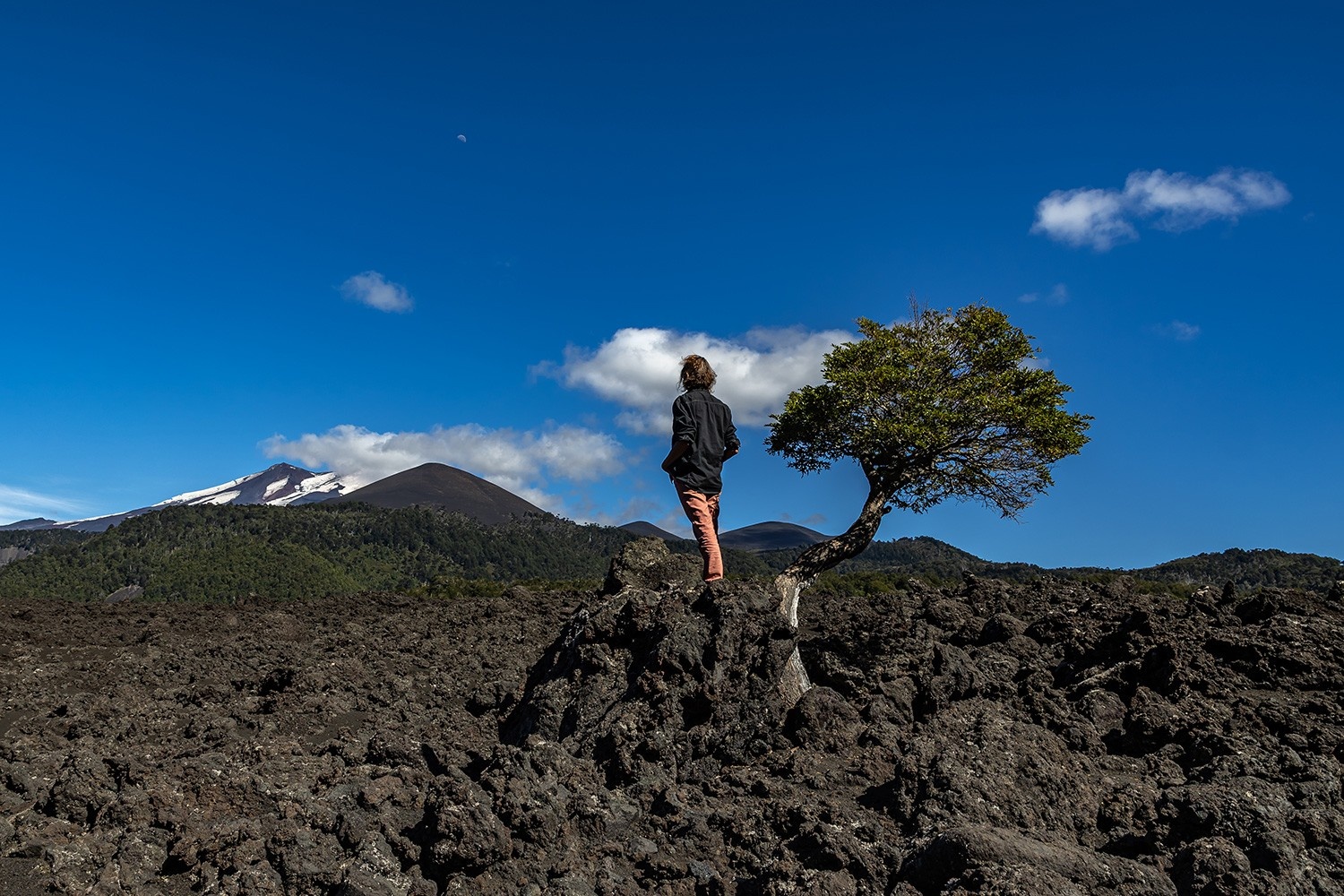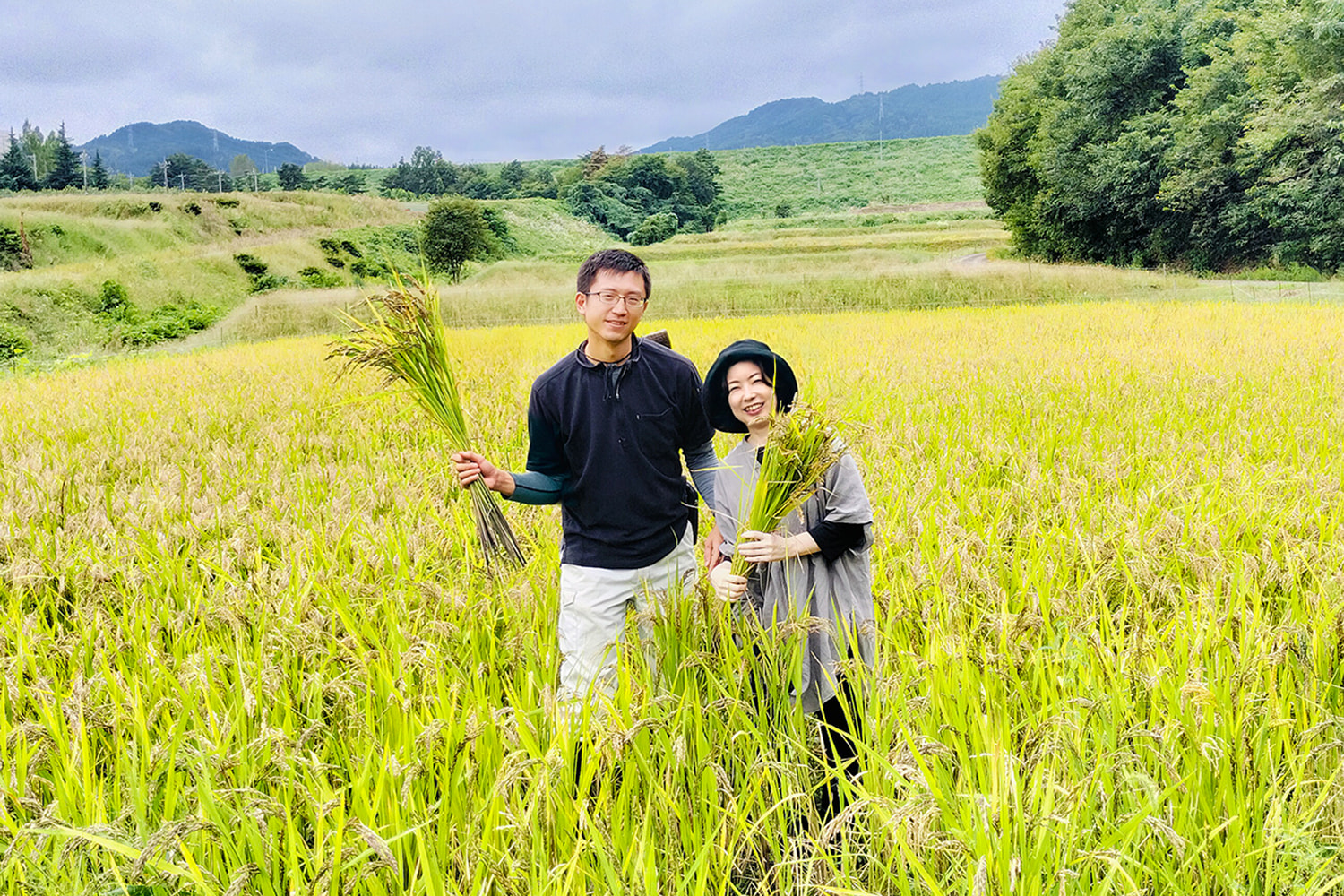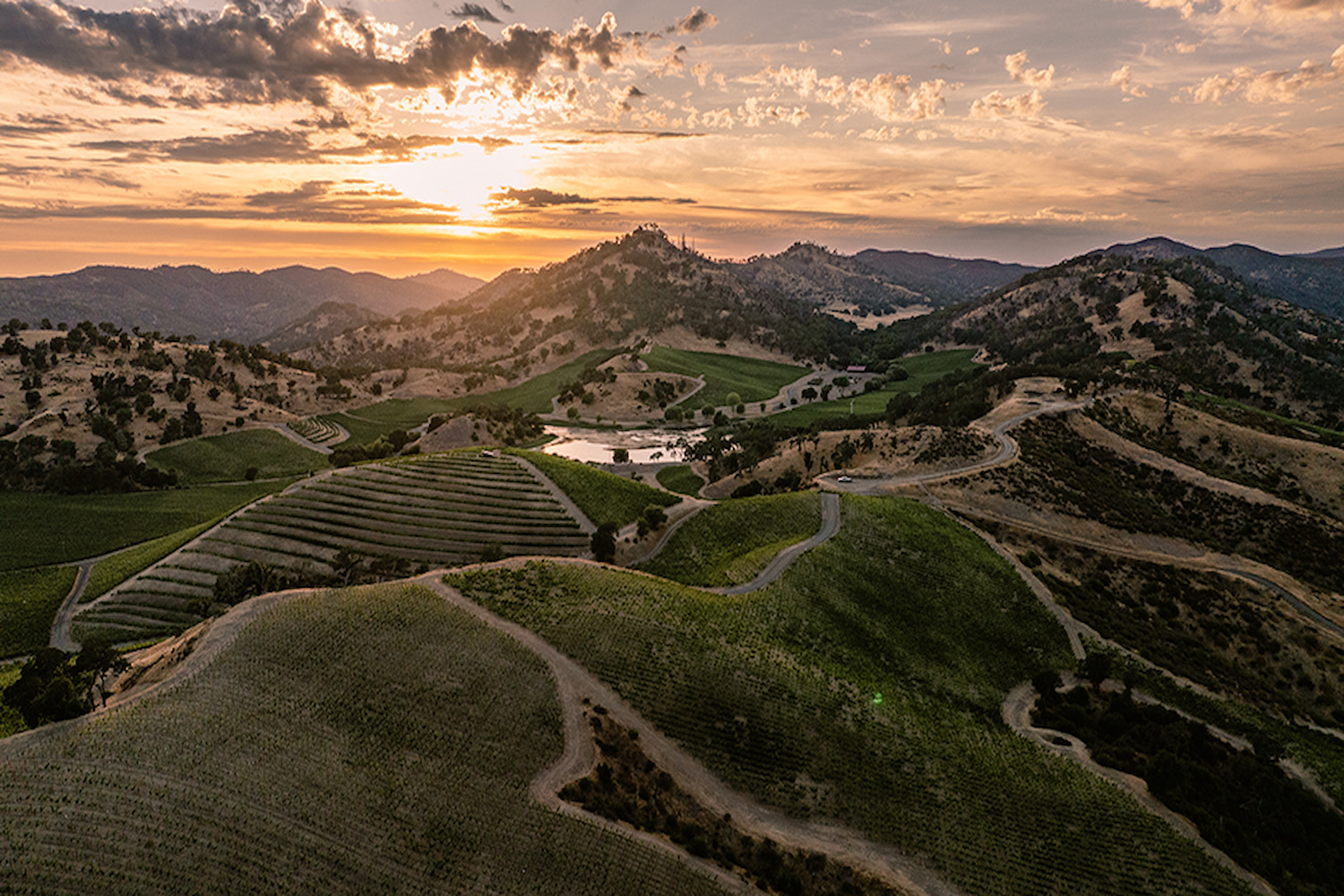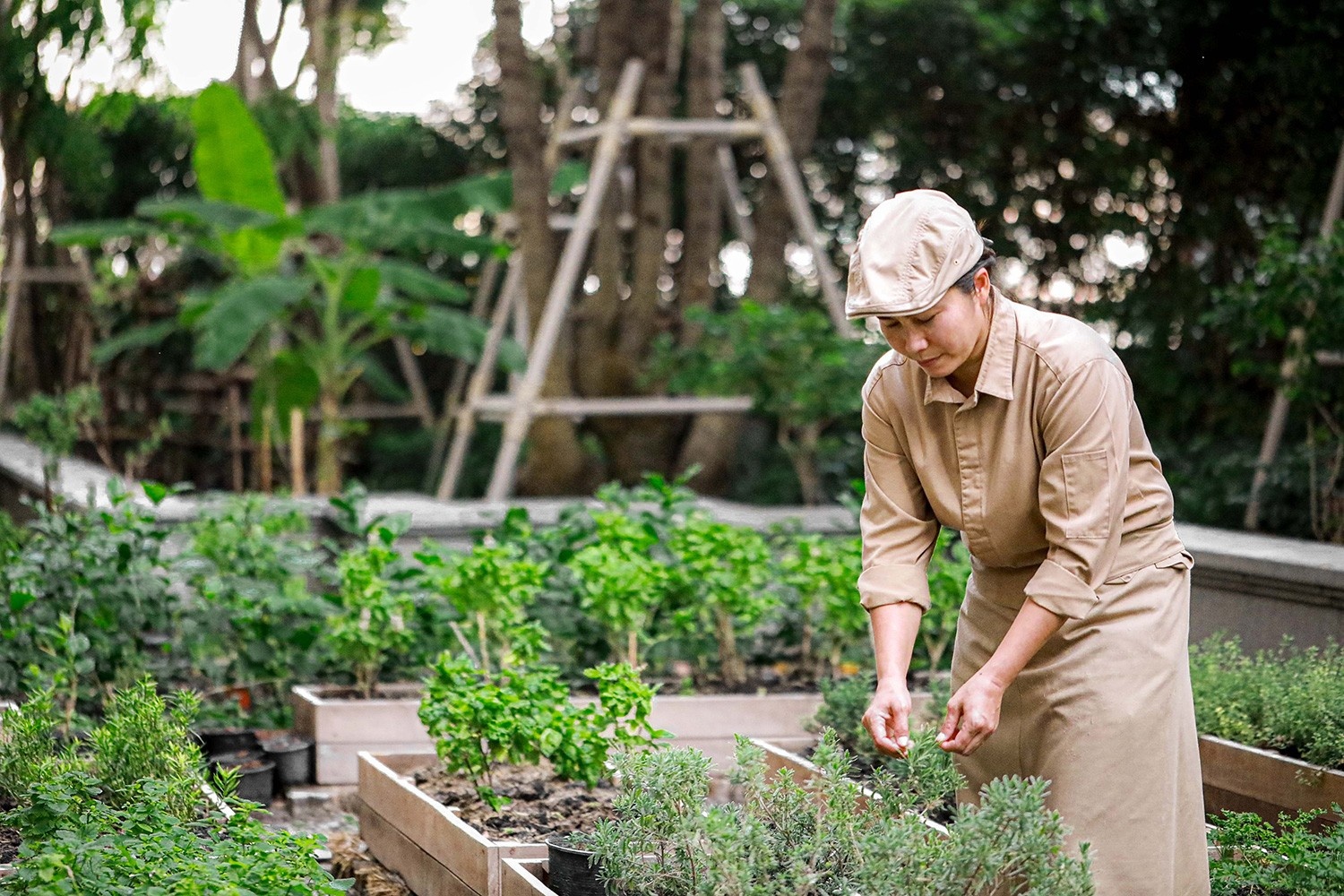North Stars:

Heritage Value

Wildlife Ecosystems

Gender Equality
“We built a small cabin with no plans for a business, but the magic of this place drew us to share it.”
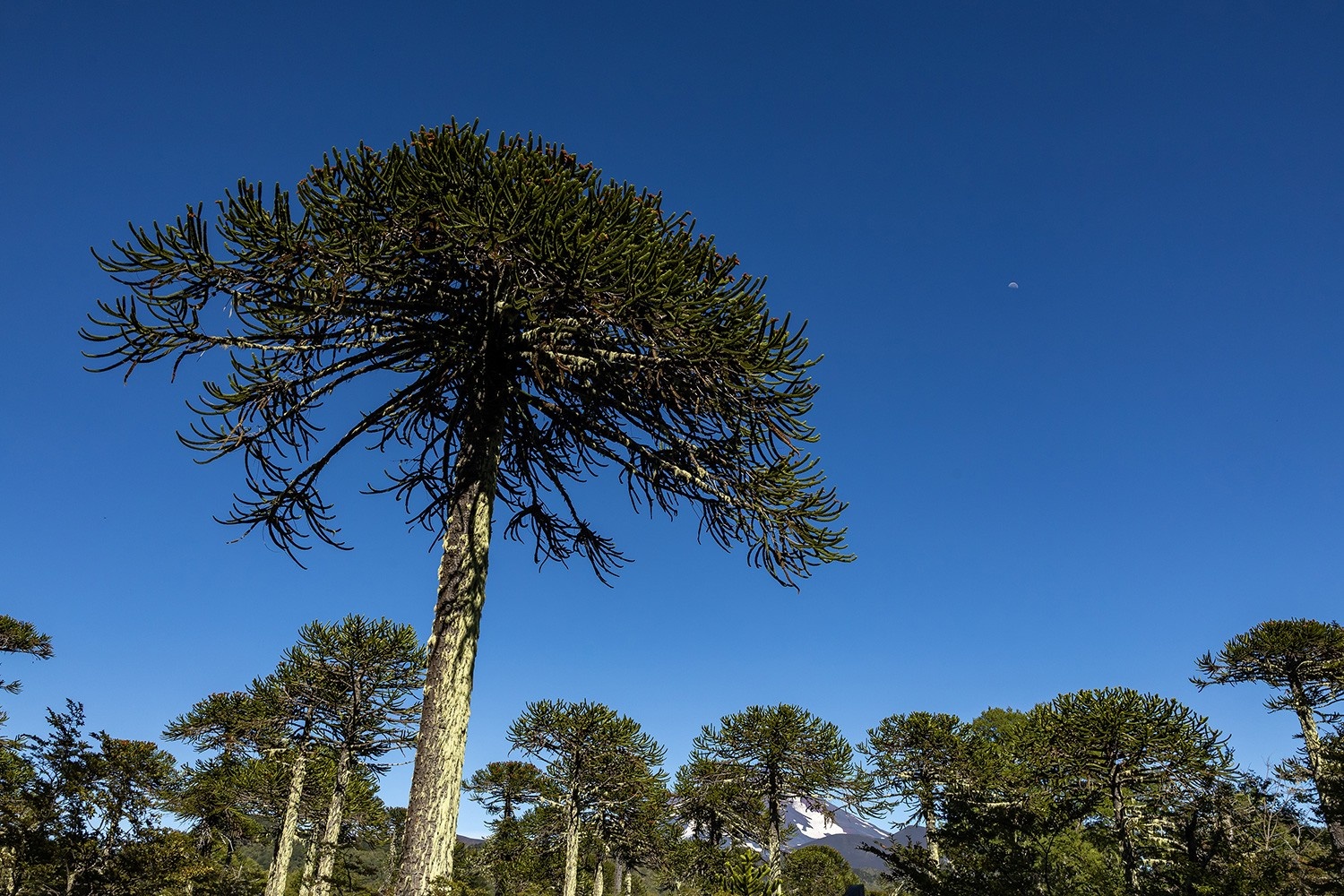
Araucauria tree in Conguillio. Courtesy of Hassen Salum.
Reaching Conguillío National Park in Chile’s Araucanía region is no simple journey. From Santiago, travelers fly to Temuco, then drive two hours along winding country roads to the Andean town of Melipeuco, a gateway to the park.
What awaits is worth the journey. Millions of years of fire and ice sculpted Conguillío into a landscape of black lava fields framed by snow-capped volcanoes. Unlike Torres del Paine or other popular destinations in Patagonia, Conguillío remains largely unknown outside Chile.
I came to visit La Baita Conguillío, one of the country’s first ecolodges. Built by Isabel Correa, she had a vision of harmony between people and the fragile environment through a model of low-impact travel. I was there to interview her for a documentary on sustainable tourism in Chile’s lesser-known Araucanía.
As I entered the park, I felt a magnetic pull. It was wild, rugged, and raw. Here I met Correa, her brown shoulder-length hair, slim frame, and elegant smile echoing the drama of the landscape itself.
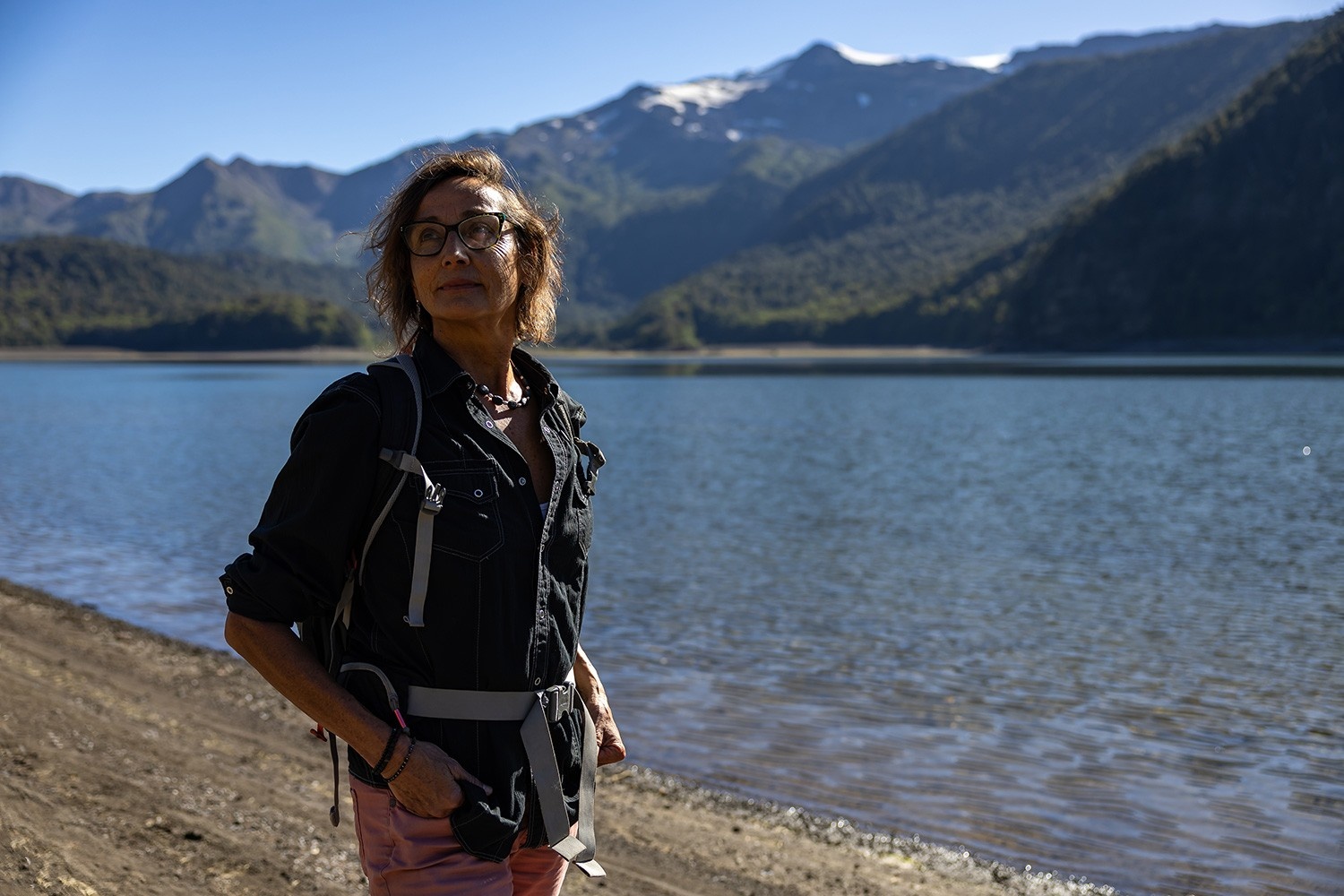
Isabel Correa in Conguillio National Park. Courtesy of Hassen Salum.
Where the Araucarias Stand
Beneath a canopy of ancient Araucaria trees, we paused before a gravel path to Playa Linda, a volcanic beach at the foot of Lago Conguillío (Lake Conguillo). Correa, our host and guide, placed her palm on a nearby trunk and closed her eyes. “Always ask permission from the forest,” she said softly.
The park holds the world’s highest concentration of Araucarias, trees of deep cultural and ecological importance to the Indigenous Mapuche. It also sits on the edge of Kütralkura Geopark, Chile’s first UNESCO Geopark.
From where we stood, the snow-streaked slopes of Llaima loomed in the distance. The most active volcano in South America, its power was impossible to ignore. Correa knows that power intimately. Around here, people call her La Mujer del Volcán — the Volcano Lady.
Drawn to the Volcano
Nearly three decades ago, Correa was a singer married to a diplomat, living in the port city of Valparaíso. In 1994, she and her husband traveled south after hearing about a piece of land for sale near Conguillío. They bought it without ever seeing it in person — flooding had made access impossible — but Correa says she felt its pull long before setting foot there. “When I first came, I felt the volcano’s strength,” she recalls.
There were no roads, no phone lines, and winters were so harsh that year-round living seemed unthinkable. But she remained undeterred. “We built a small cabin with no plans for a business, but we were captivated by the magic of this place,” she says. “Soon we realized we would have to share it with others — and do so responsibly, with the utmost respect for both the culture and the environment.”
She also knew she would need the trust of the Mapuche community, long the stewards of this land. She sought out a machi — a Mapuche spiritual elder and healer — to learn their traditions and how best to care for the land. At first, it was difficult to integrate as both an outsider and a woman in charge. But slowly, she built friendships, and in time, the community welcomed her as an ally.
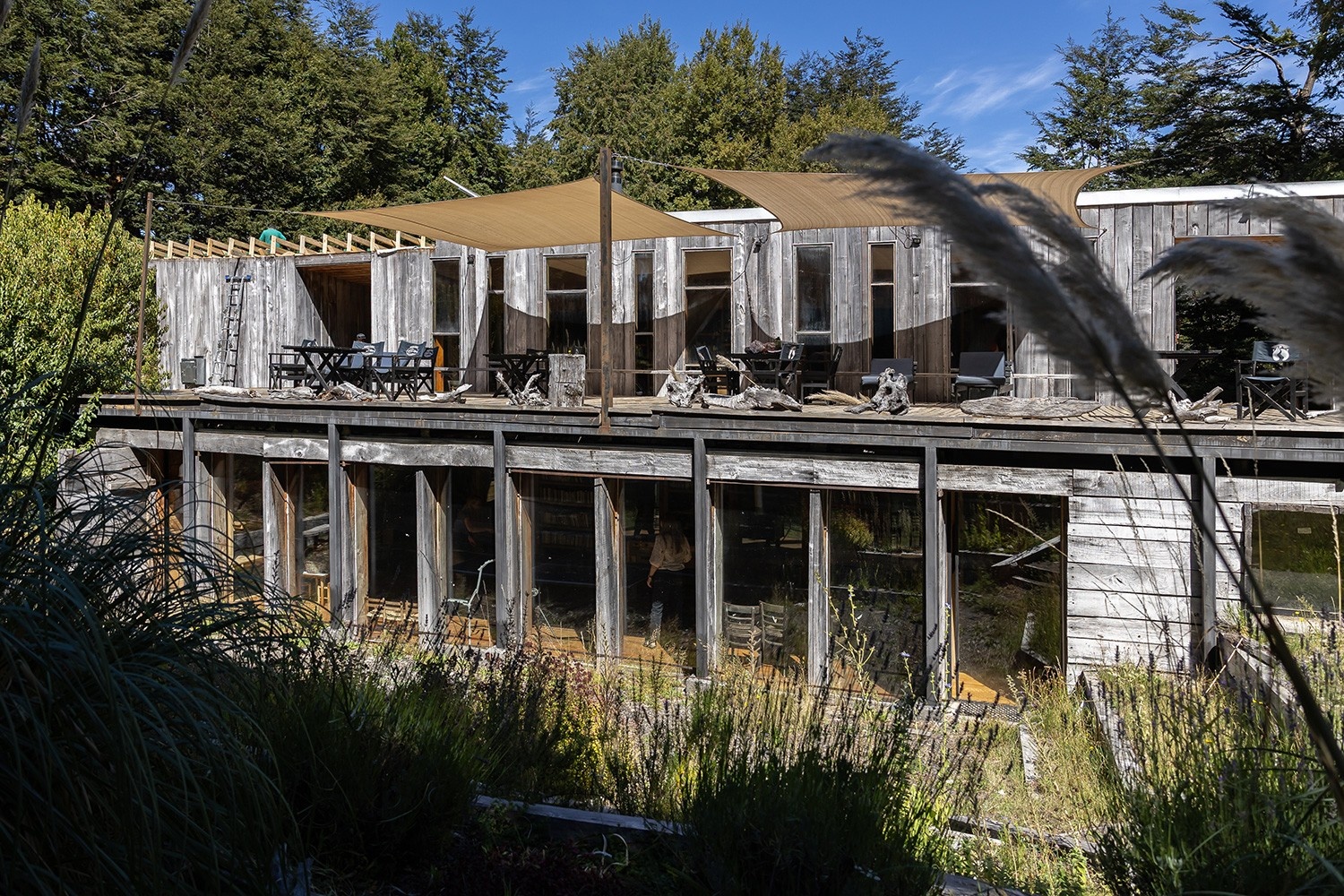
Exterior of La Baita Ecolodge. Courtesy of Hassen Salum.
The First Ecolodge at the Park’s Edge
By 1996, that first cabin had grown into La Baita — Italian for “mountain refuge.” Long before “eco” became a tourism buzzword, Correa imagined a place that could live in harmony with its fragile surroundings.
Built at the edge of the ancient Araucaria forest, the lodge runs on solar panels and a river-fed water turbine. Its design echoes the forest itself: native coigüe wood, overlapping planks, and floor-to-ceiling windows that frame the trees. State-of-the-art insulation keeps it cool in summer and warm in winter, blending rustic beauty with modern efficiency.
Designed by Gubbins Arquitectos and Polidura + Talhouk Arquitectos, La Baita is both refuge and reflection: a place where comfort and nature meet, inviting travelers to slow down, recharge, and immerse themselves in the magic of Conguillío National Park.
La Baita offers a range of accommodations. The main lodge has six forest-view rooms with queen beds, private bathrooms, and wide windows that flood the spaces with light. Two intimate cabins nearby invite guests to cozy up by wood-burning stoves, under down comforters, with views opening directly into the forest. For more privacy, nine spacious cabañas are scattered throughout the park — each with kitchens, multiple rooms, and its own character — best reached by all-wheel drive.
Inside, the atmosphere reads warm and welcoming. A reading lounge with couches, armchairs, and shelves of books greets visitors, while the dining room — with its stone fireplace, handcrafted tables, and firelight glow — creates the perfect gathering place.
Meals are made with seasonal, locally grown ingredients. Correa’s staff — many of them locals — feel like family, and the lodge supports the community through jobs, local sourcing, and summer programs for children.
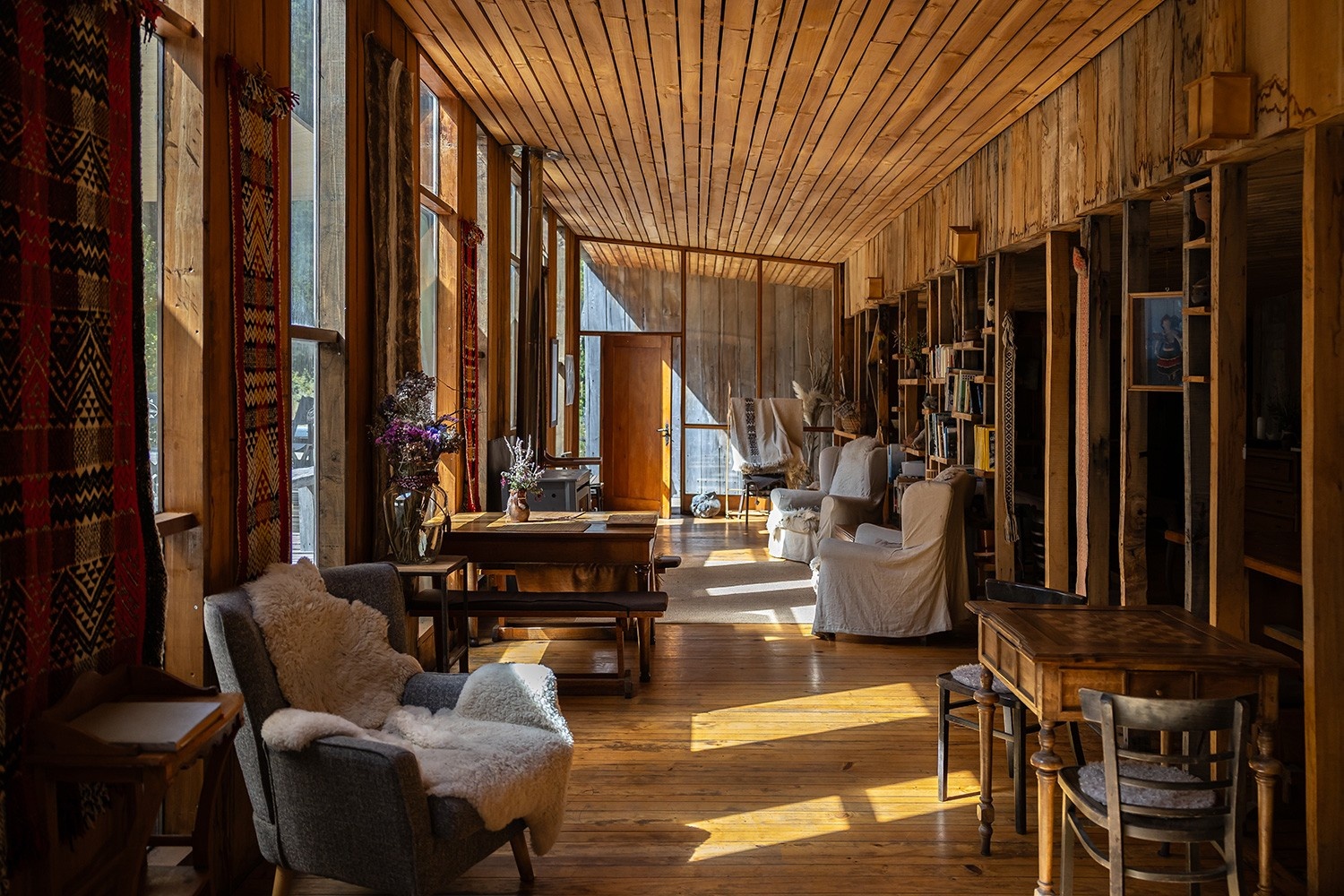
Inside La Baita Ecolodge. Courtesty of Hassen Salum.
Guests spend their days hiking the park’s 13 trails, wandering among forests and volcanic plains, soaking in the spa, or learning Mapuche traditions directly from the community. Even the rocks tell stories here: “lava bombs,” for instance, are masses of molten stone hurled from past eruptions of the Sierra Nevada volcano, now scattered along the lake’s edge.
A Life of Challenges and Perseverance
Correa’s personal journey has been as rugged as the landscape she calls home. After her divorce, she ran La Baita on her own while raising her children. There were power outages, long winters, a global pandemic, and long stretches of isolation. “Sometimes I wonder how much longer I’ll be here,” she admits. “But I know this is my mission. To protect this place, you have to stay.”
She and her team work to educate visitors about the park’s unique flora and fauna through guided treks. Each summer, she runs camps for schoolchildren and university students, teaching them about geology, ecosystems, and the fight to protect Conguillío from climate change. So far, overtourism and overdevelopment have not reached this remote corner of Chile.
From the beginning, Correa’s approach stood apart from the rush toward mass tourism. She chose slow, responsible development, welcoming like-minded travelers who often leave as ambassadors for conservation.
Now, three decades after she first arrived, La Baita stands as a model for tourism in wild places: small in scale, deeply respectful. “I hope when people leave here, they take a little piece of its ngen — spirit, in the Mapuche language — with them,” she says.
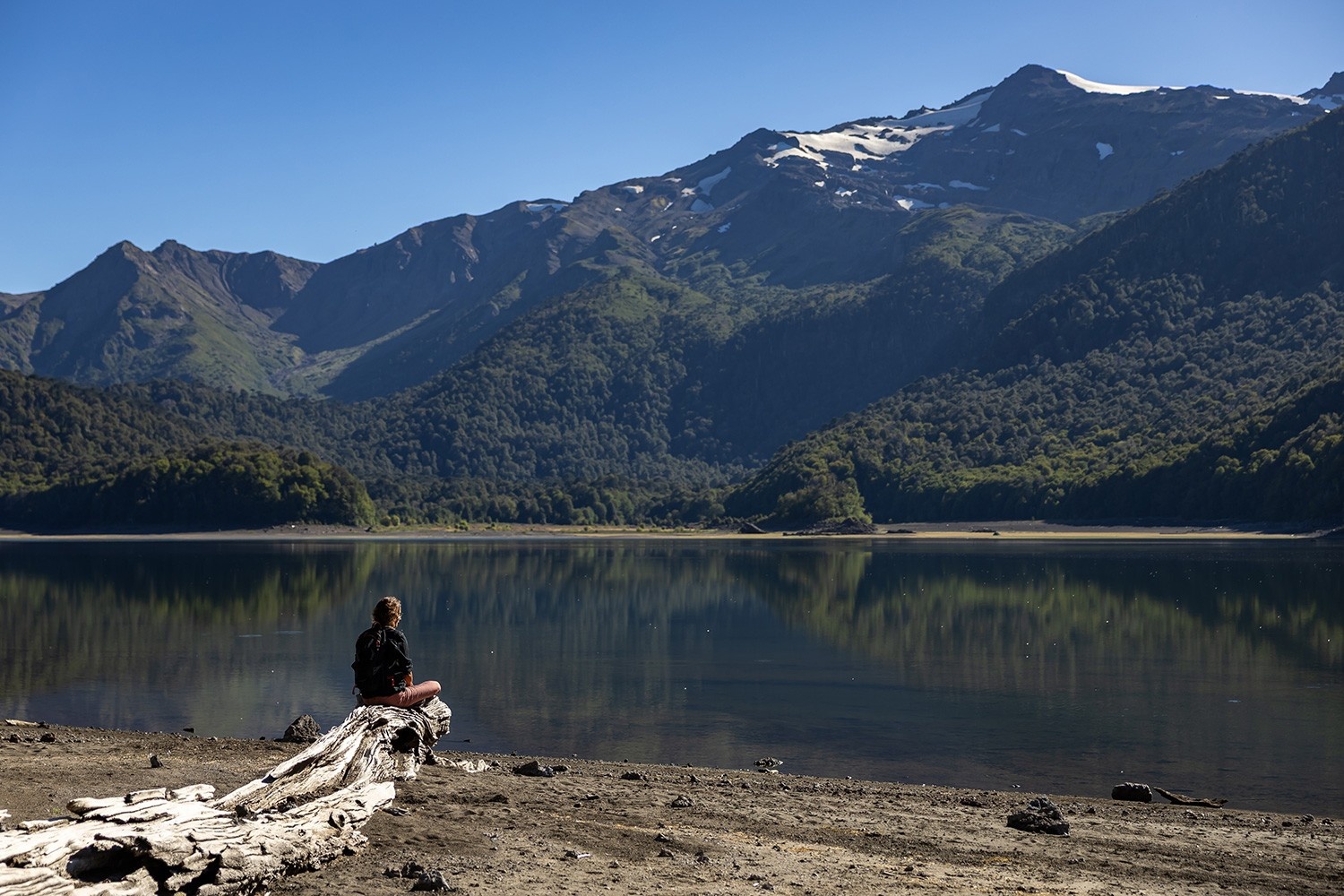
Isabel at Playa Linda. Courtesy of Hassen Salum.
Staying there
La Baita has six rooms at the lodge, 2 cabins, and nine larger cabañas spread throughout the forests. It is open year-round, and activities and tours can be arranged by Correa and her team. To reach La Baita, you can either drive, take a bus from Temuco or else arrange to have the staff pick you up at the airport in Temuco (approximately 112 kilometers away).
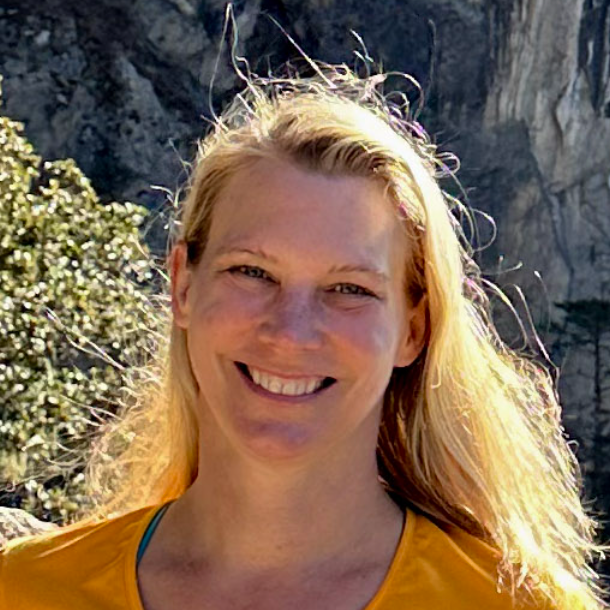
Nicole Melancon is a freelance travel writer, and a content editor at GLP Films, an award-winning sustainable storytelling agency. Nicole focuses on sustainable adventure travel, community tourism, transgenerational travel, and solo travel for women over 50. Nicole’s work has been published at BBC Travel, National Geographic Travel, Toronto Star, GLP Films, and her 15-year old travel blog, www.thirdeyemom.com. You can check out her work here and follow her travels and stories on Instagram and LinkedIn. She resides in Minneapolis, MN.
North Stars: Gender Equality, Heritage Value, Wildlife Ecosystems


